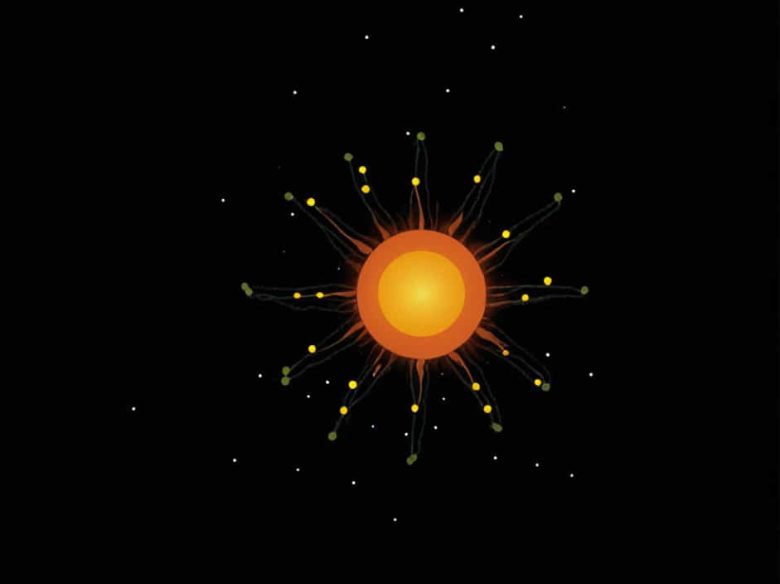In the world of astronomy, navigation, and geometry, precise measurements of angles are crucial. One such unit of measurement is the arc second, which represents one sixtieth (1/60) of an arc minute. Understanding this unit helps in various fields, including celestial observations, GPS technology, and even astrophotography.
This topic explores what an arc second is, how it relates to other angular measurements, and its importance in different scientific applications.
What Is an Arc Second?
An arc second (also written as 1″) is a very small unit of angular measurement. It is defined as:
- 1/60 of an arc minute
- 1/3600 of a degree
Since a full circle is 360 degrees, and each degree contains 60 arc minutes, an arc second is a tiny fraction of a degree, making it useful for highly precise calculations.
Breaking Down Angular Measurements
To understand an arc second better, let’s look at the hierarchy of angular measurements:
- Degree (°) – A full rotation is 360°.
- Arc Minute (′) – Each degree is divided into 60 arc minutes.
- Arc Second (″) – Each arc minute is further divided into 60 arc seconds.
In mathematical terms:
- 1° = 60′ (arc minutes)
- 1′ = 60″ (arc seconds)
- 1° = 3600″ (arc seconds)
Why Are Arc Seconds Important?
Arc seconds are widely used in astronomy, surveying, and navigation because they provide extreme precision when measuring angles and distances. Below are some of the key applications.
1. Astronomy
Astronomers use arc seconds to measure the apparent size of celestial objects and their positions in the sky. Some key examples include:
- Parallax Measurement – The distance to nearby stars is calculated using arc seconds in a method called stellar parallax. The term parsec (parallax-second) is derived from this concept.
- Planetary Observations – The size of planets, moons, and distant galaxies is often expressed in arc seconds.
- Telescope Resolution – The resolving power of telescopes is measured in arc seconds. Higher resolution telescopes can distinguish objects separated by tiny fractions of an arc second.
2. Geodesy and Cartography
Arc seconds play a vital role in Earth measurements, including:
- Latitude and Longitude – GPS coordinates are often recorded in degrees, minutes, and seconds. For example, a location might be given as 40° 42′ 51″ N, 74° 00′ 21″ W.
- Surveying and Mapping – Land surveyors use arc seconds to define property boundaries and map terrains with extreme accuracy.
3. Optics and Astrophotography
In optical systems, an arc second determines the clarity of images captured by telescopes and cameras. A high-resolution telescope can resolve objects separated by a fraction of an arc second, which is essential for capturing details of distant stars, planets, and galaxies.
4. Military and Aerospace Applications
Precision targeting, missile guidance, and satellite positioning rely on measurements in arc seconds to ensure accuracy in navigation and targeting systems.
How Small Is an Arc Second?
To visualize how tiny an arc second is, consider these comparisons:
- The width of a human hair at a distance of 10 meters is about 1 arc second.
- A penny viewed from 4 kilometers (2.5 miles) away is roughly 1 arc second in size.
- The full Moon appears about 1,800 arc seconds (or 30 arc minutes) across in the night sky.
Common Conversions Involving Arc Seconds
Because arc seconds are so small, they are often converted into radians, a unit used in physics and engineering. The conversion formula is:
Additionally, in astronomical units:
- 1 arc second of parallax corresponds to a distance of 1 parsec (~3.26 light-years).
Famous Examples of Arc Second Measurements
Hubble Space Telescope Resolution
NASA’s Hubble Space Telescope has a resolution of about 0.05 arc seconds, allowing it to capture extremely detailed images of distant galaxies.
The Andromeda Galaxy
The Andromeda Galaxy (M31), the closest large galaxy to the Milky Way, appears about 3 degrees wide in the sky, which is 10,800 arc seconds across.
Alpha Centauri’s Parallax
The closest star system to Earth, Alpha Centauri, has a parallax angle of 0.76 arc seconds, helping astronomers calculate its distance from us.
An arc second is a fundamental unit of angular measurement, representing one sixtieth of an arc minute or one thirty-six-hundredth of a degree. Though tiny, this measurement is crucial in astronomy, navigation, cartography, and optics, allowing scientists and engineers to make precise calculations.
From determining the distance of stars to enhancing telescope resolution, arc seconds play a significant role in our understanding of the universe. Whether you are an amateur stargazer or a professional astronomer, knowing about arc seconds helps in appreciating the precision required in scientific observations.



